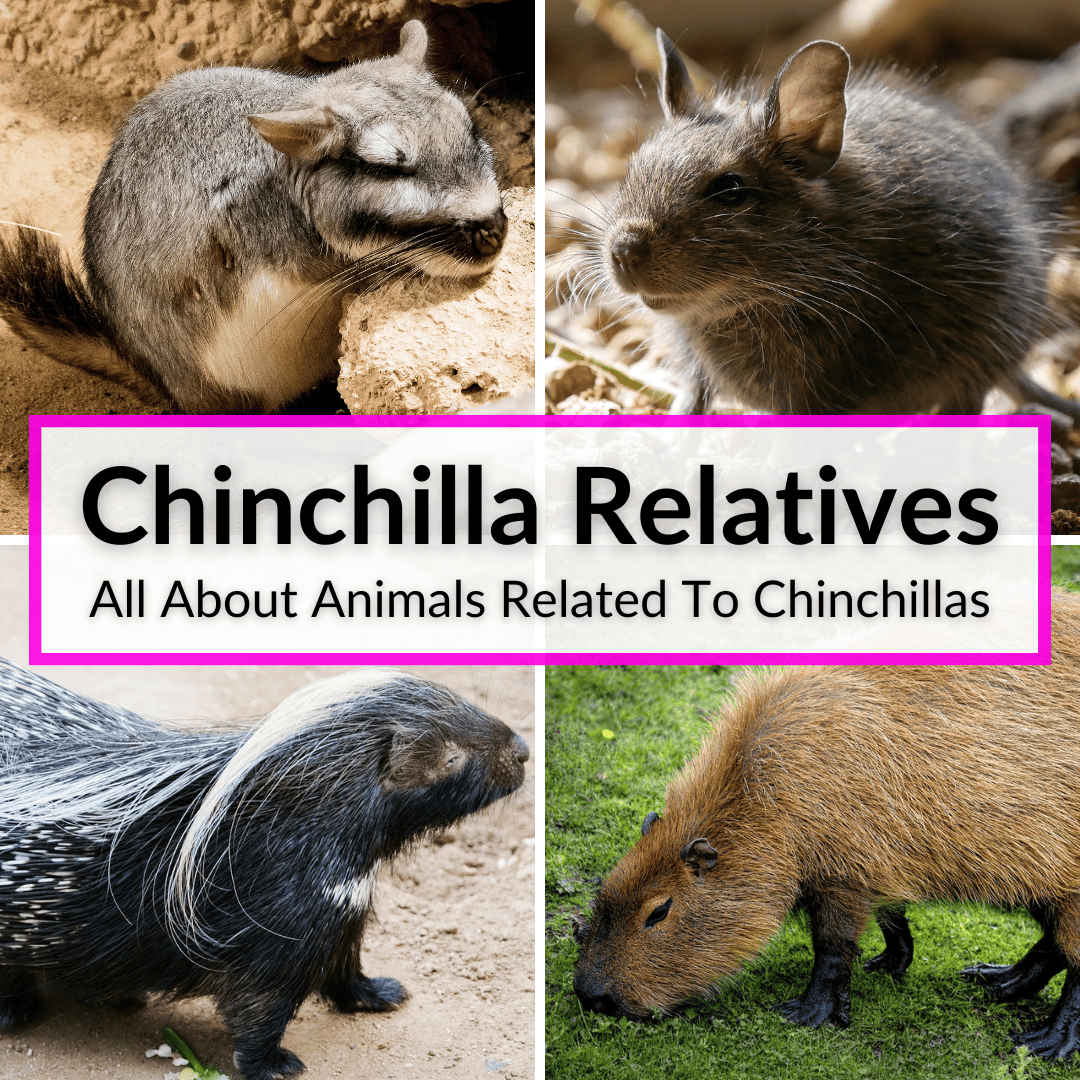
As such, there are many distant chinchilla relatives.
But when we narrow it down to close relatives, the list becomes much shorter.
In fact, there are only a few animals on it.
Some are obvious just by looking at them.
Others may seem like they have little in common with the chinchilla.
Keep reading for a list of the chinchilla’s closest relatives. For each animal, we will provide you all the basic info you need, as well as a photo so you can see how similar (or dissimilar) they look to the chinchilla.
Contents
Chinchilla Relatives
The following animals are all closely related to the chinchilla. We also have an article on different types of chinchillas here, and one on animals that look like chinchillas here.
Mountain Viscacha
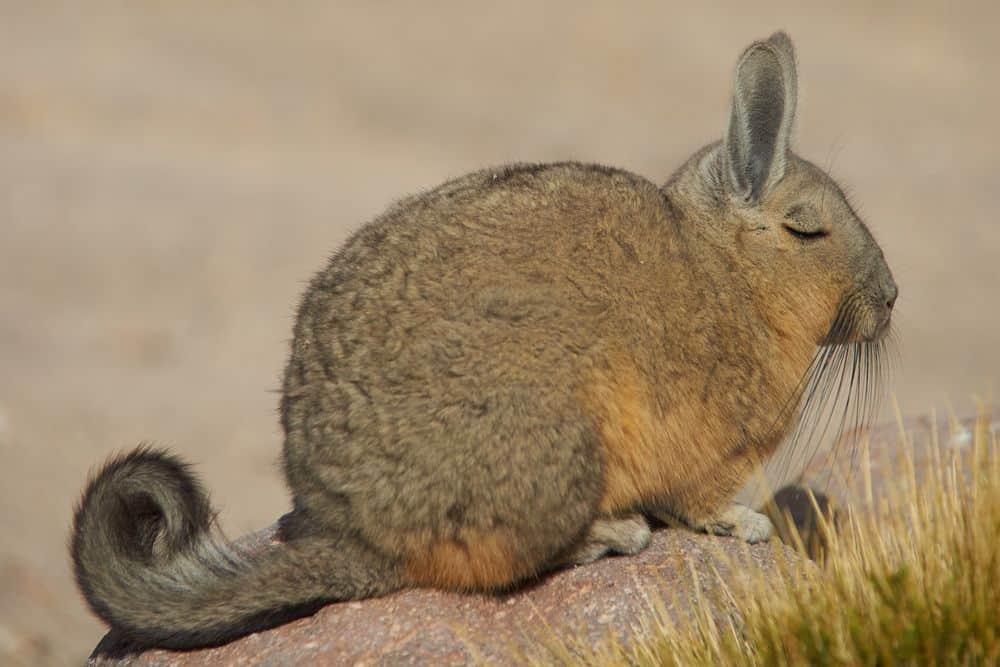
Mountain viscachas are chinchilla’s closest relatives. They belong to the same family as chinchillas: the Chinchillidae family.
Habitat
Like chinchillas, viscachas live in rocky, arid habitats of the South American Andes, where vegetation is sparse.
Characteristics And Habits
These South American rodents are quite similar to chinchillas in appearance. They measure about 12 to 18 inches and weigh about 6 pounds.
Viscachas have short forelimbs, long hindlimbs, and long, bushy tails. Like chinchillas, their fur is soft and dense. The color of the fur is pale yellow with gray parts. Viscachas live in communal herds and dig burrows. They forage for food at night.
Lifespan
The average lifespan of the viscacha is about 9.5 years, although some captive animals have lived for 19.5 years.
As Pets
Currently, viscachas are not generally kept as pets. They have not been domesticated successfully.
Degu
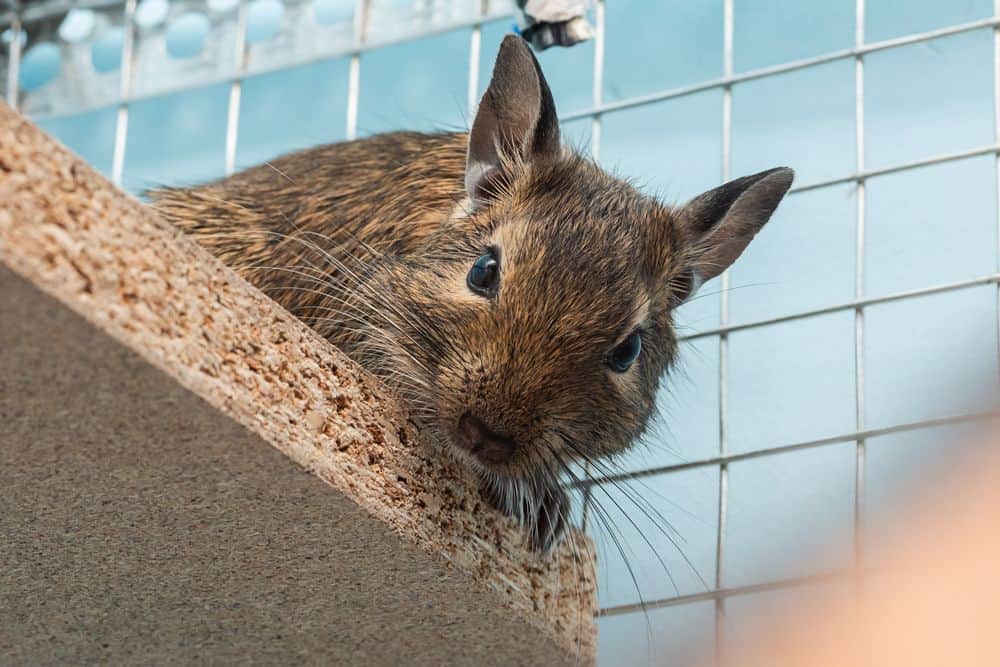
Degus are also South American rodents that are closely related to chinchillas. They belong to the parvorder Caviomorpha and the infraorder Hystricognathi, just like guinea pigs and chinchillas.
Habitat
Like chinchillas, degus live in the Andes Mountains in northern Chile.
Characteristics And Habits
Degus measure around 9 to 12 inches long and weigh around 250 g or 10 ounces. They have squirrel-like bodies with yellow-brown fur and long, thin tails. Their bellies have lighter-colored fur.
Degus are social animals that thrive in the company of other degus. They communicate with each other using squeaks, chirps, and purring sounds.
Lifespan
Degus live for 5 to 8 years.
As Pets
Degus make excellent pets. However, they do need a spacious cage with clean, fresh bedding, with plenty of perches and ramps for climbing. They also need a special diet of high-quality hay, pellets, fruits, and vegetables.
Like chinchillas, degus have ever-growing teeth and need to chew on hay and other wooden toys to keep them blunt. These intelligent animals love to explore, so you must provide them with hideouts, running wheels, and plenty of toys. Degus also need daily time outside their cages to run, play, and interact with each other.
Agouti
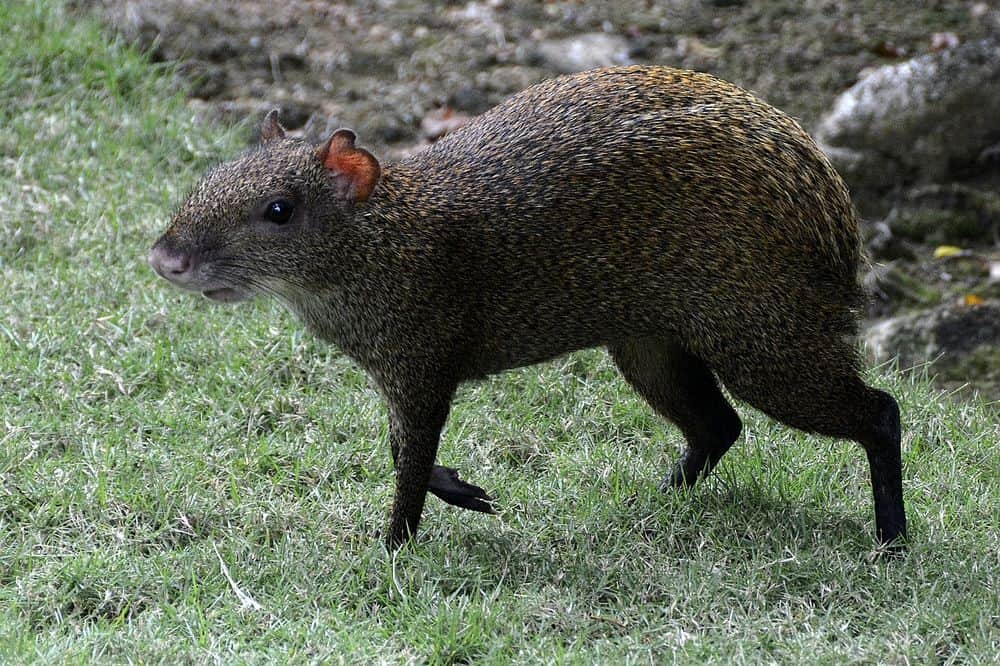
Agoutis are small herbivorous rodents that are related to chinchillas. Both animals belong to the Chinchillidae family.
Habitat
Agoutis are mainly found in Central and South America. They prefer diverse habitats, ranging from grasslands, rainforests, and mountainous terrains.
Characteristics And Habits
Agoutis are large rodents, weighing around 13 pounds (or 6 kg). They have elongated bodies with bald tails and a gray, dull-brown color. Agoutis forage for a variety of foods, like nuts, seeds, plant matter, grasses, etc. They are excellent swimmers.
Lifespan
Captive agoutis are known to live for 20 years.
As Pets
Agoutis are sometimes kept as exotic pets. Captive-bred agoutis are known to be smart, friendly, social, and outgoing. Wild agoutis are shy and nervous. Only an experienced pet owner should keep an agouti as a pet.
Capybara
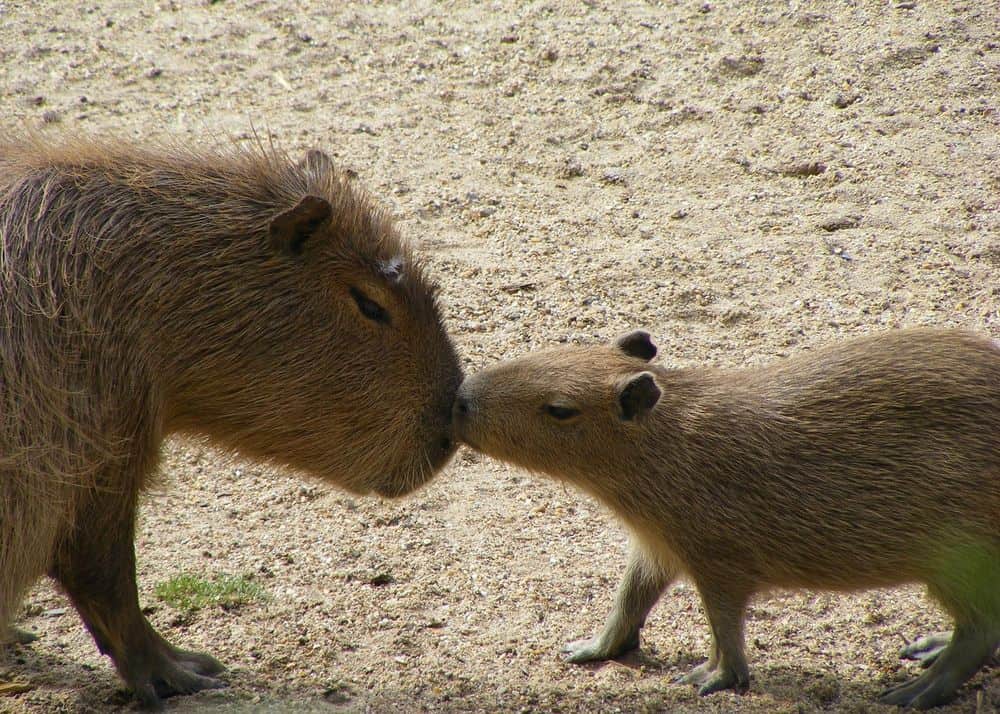
Capybaras are distantly related to chinchillas. These South American rodents prefer habitats that are nearer to the water.
Characteristics And Habits
Capybaras are huge rodents that grow up to 4 feet in length and weigh around 110 pounds (50 kg). Their barrel-shaped bodies are covered with rough fur in a reddish-brown or grayish color. Capybaras feed on a variety of grasses and aquatic plants.
Lifespan
The wild capybara lives, on average, for 8 to 10 years.
As Pets
Capybaras have not been domesticated. However, the few people who have kept them as pets report that they are trainable animals that can harmoniously coexist with dogs and cats.
Guinea Pig
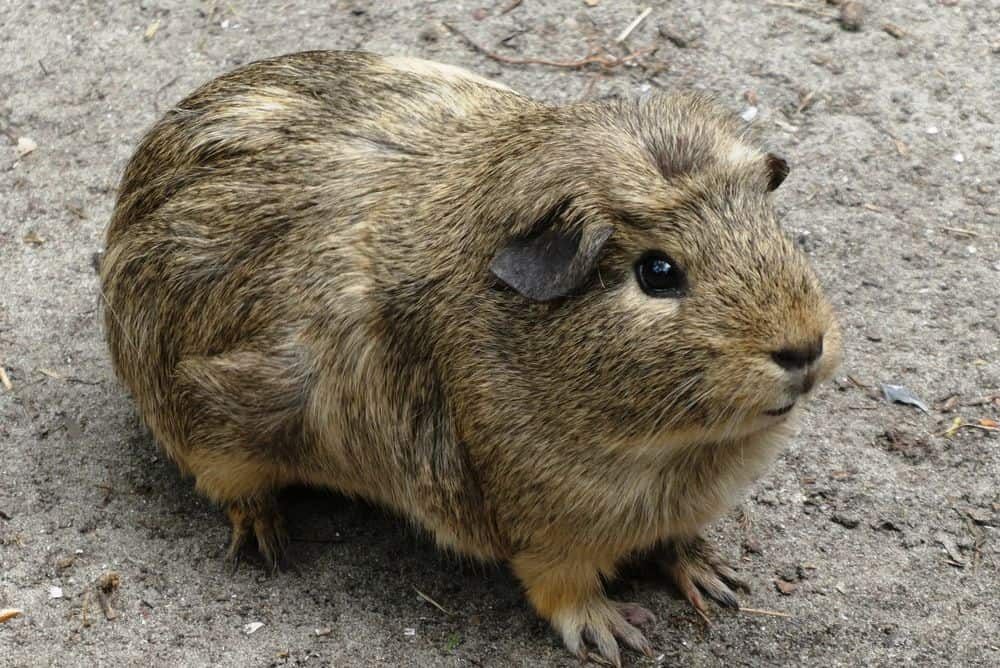
Like degus and chinchillas, guinea pigs belong to the order Rodentia and the suborder hystricomorpha.
Habitat
Guinea pigs also come from South America. They were domesticated nearly 500 years ago, but there are still some wild guinea pigs living in the savannas, deserts, and grasslands of South America.
Characteristics And Habits
There are several varieties of guinea pigs. The average guinea pig’s weight is 2 pounds (1000 grams) and they measure between 8 and 16 inches (20 and 40 cm) long. Guinea pigs are diurnal (active during the day). They are vocal, sweet, friendly, and cute.
Lifespan
Captive guinea pigs live an average of 5 on 8 years.
As Pets
Like chinchillas, guinea pigs make wonderful pets. However, they do have specific needs when it comes to their diet and housing. It is important to do your research before getting one as a pet.
Porcupine
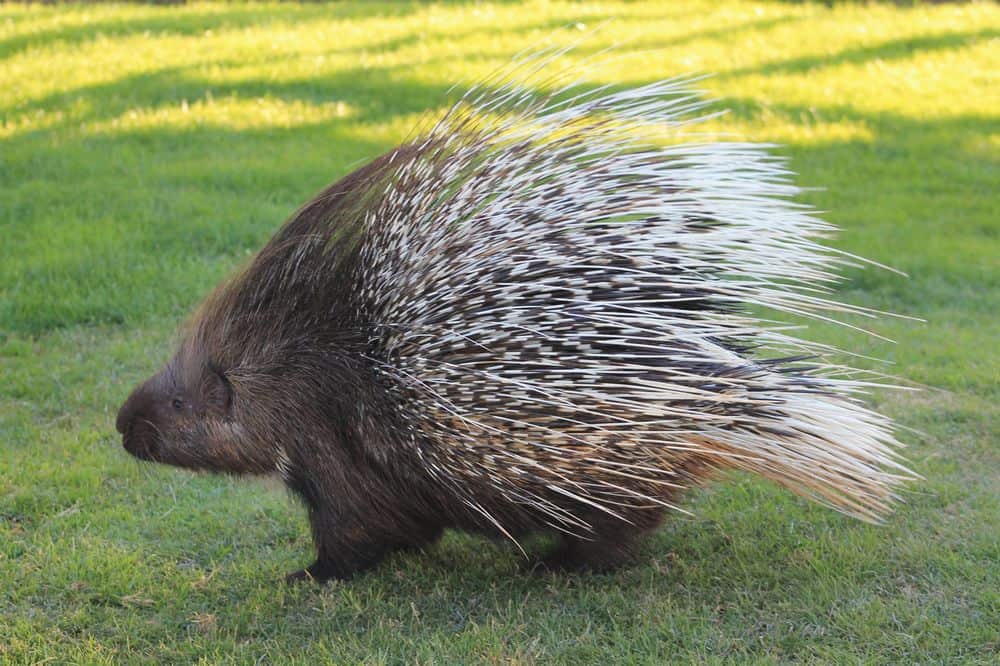
Scientists believe that porcupines first came from South America and that they are closely related to chinchillas and guinea pigs.
Habitats
Porcupines are found in forests, deserts, and rocky outcrops in North and South America, Southern Europe, and Africa.
Characteristics And Habits
Porcupines are known to have an average of 30,000 quills on their backs, sides, and tails. The quills are yellow or white with a dark tip. They are not poisonous or venomous.
The North American porcupine is a large rodent that can grow to a length of 3 feet (60 to 90 cm) and weigh around 20 pounds (9 kg). Porcupines have a slow and clumsy gait. They are semi-arboreal and can live on the ground and in trees. They can also swim.
Porcupines are generally shy creatures. They spend most of their time in dens, crevices, and under the roots of uprooted trees. They prefer solitary living, although they may share caves with other porcupines in the winter for warmth.
Porcupines have poor eyesight but make up for it with excellent smell and hearing. They are mostly vegetarian and feed on tree bark. They are vocal animals and make high-pitched squeaking and grumbling noises.
Lifespan
Captive porcupines are known to live for 18 years, whereas wild ones live for around 8 to 10 years.
As Pets
Porcupines are often kept as exotic pets. Despite their appearance, they are quite docile. You can feed them fruit, tree bark, twigs, buds, leaves, and roots. They need a large enclosure with plenty of hideouts.
Patagonian Mara

The Patagonian mara is known by many names, including dilbaby, Patagonian cavy, and Patagonian hare. These large rodents are related to capybaras, chinchillas, and guinea pigs.
Habitat
Patagonian Hares are native to Argentina in South America. They are used to the region’s harsh climate with varying temperatures.
Characteristics And Habits
In size, the Patagonian mara is about as large as a medium-sized dog. They measure 24 inches at the withers and weigh about 20 to 35 pounds. In color, they resemble agoutis, with light gray-yellow coats with lighter bellies.
Patagonian Mara are excellent jumpers and can easily cover distances of over 5 feet. They are diurnal creatures.
Lifespan
In captivity, these animals are known to live for 12 to 14 years.
As Pets
Many zoos keep the Patagonian mara and some people have even kept these exotic animals as pets. You can train them to walk on a leash and you can even potty train them. However, they need a safe enclosure that is more than 6 feet high. Their diet is made up of pellets, fresh fruits, and vegetables.
Chinchillas’ Closest Relatives: Final Thoughts
There are many chinchilla relatives out in the world. But there are only a few close relatives of the chinchilla. All of the above animals fit that description.
So, which of these animals makes for the best pet? Obviously, I am biased toward the chinchilla, so that is my answer. If I were to look at it objectively, I’d say either the chinchilla, guinea pig, or degu. It would depend on which one is best suited to you.
Leave a Reply